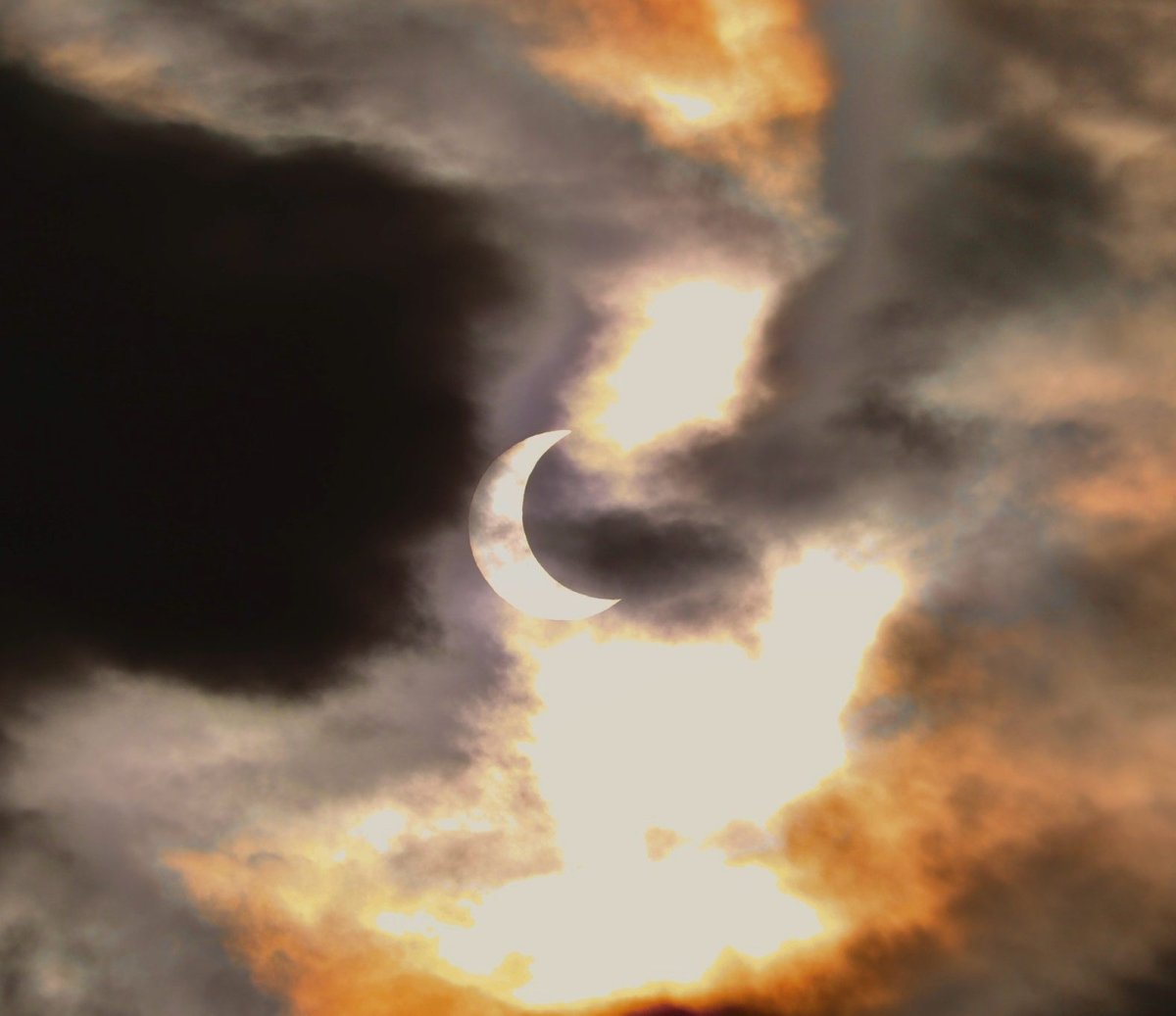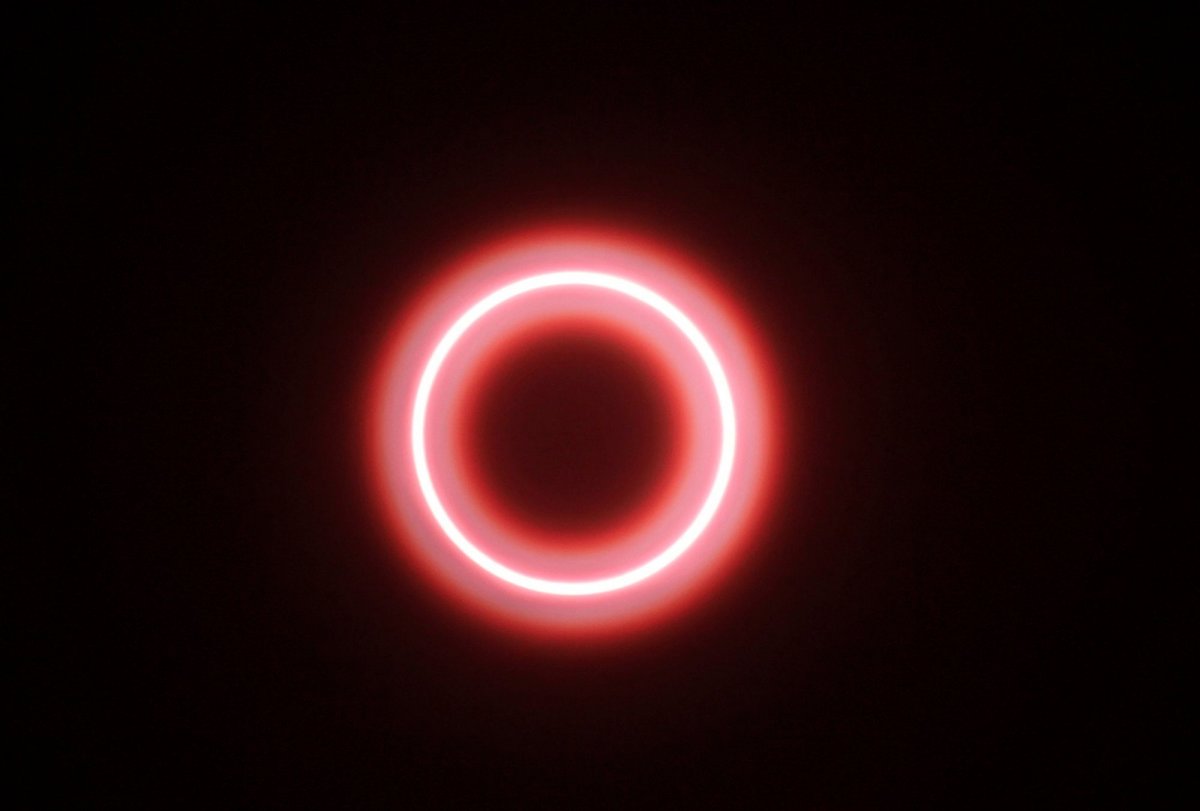A solar eclipse will darken skies across parts of North America this weekend — one of two must-see celestial events over the next six months that the continent won’t see again for years.

So if you have fear of missing out, be prepared, because the next solar eclipses in Canada this century are few and far between.
The next eclipse will be 2033, though that one will barely scrape the northern edges of the Yukon. Following that, a total eclipse will happen in 2044, followed by annular eclipses in 2048 and 2057.
Two more eclipses will happen between 2061 and 2080, with three occurring between 2081 and 2100.

Technically, Saturday’s eclipse will be annular, not total — a term meaning the moon won’t quite entirely block out the sun, resulting in a sliver of sunlight and the common phrase ‘ring of fire’ eclipse.
Also, in Canada, the weekend event will only be a partial eclipse despite it starting out west of B.C.’s Vancouver Island. However, it will then track southeast, making landfall in Oregon before travelling towards Texas, Mexico and South America before disappearing over the Atlantic.
In its trek across eight U.S. states, the path of annularity will be around 320 kilometres wide, and will take less than an hour to travel from Oregon to Texas. Those along the path will see the ring of fire for around four minutes.
In Vancouver and parts of B.C.’s Southern Interior, viewers will experience 80 per cent of the eclipse, with the prairies at 70 to 50 per cent. Eastern Canada will only see 10 to 20 per cent.
In B.C., the partial eclipse will start at 8:10 a.m., with a midpoint of 9:22 a.m., and ending at 10:42 a.m.

“People along the (eclipse path) from Oregon to Texas will see about one per cent of light (around the moon), almost like a wedding band in the sky,” said astronomy educator Gary Boyle of Ottawa, Ont.
In April, a total eclipse will drift across Mexico, then trek northeast towards Toronto, Montreal and the Atlantic provinces.
However, before viewing either eclipse, precaution is needed — looking directly at the sun during an eclipse is never recommended.
Boyle says if you don’t have solar glasses or welder’s glasses, one hack is to use a pinhole projector — like a spaghetti colander or strainer — that can cast an image of the sun onto a sheet of paper or the ground.
“Then you’ll see the semi-circles of the eclipse without physically looking at the sun, which is dangerous for your eyes, obviously,” said Boyle.
With Oregon being the first state to experience Saturday’s eclipse, visitors are flocking to the area, though nowhere near the incredible rush that gripped the state in August 2017 — America’s first eclipse since 1979.
“With solar eclipses, you must travel to a very specific location to get totality, whether it’s a total or annular eclipse,” said Boyle.

“Whereas for a lunar eclipse, when the moon turns orange, about half the world will see it. There are better chances to see a beautiful lunar eclipse than a total solar eclipse — unless you really want to travel halfway around the world.”
He continued, saying the world will see two solar and two lunar eclipses per year, “but to see any type of eclipse is really a spectacle of beauty.”
“Yeah, some will say it’s just the moon passing in front of the sun, but it’s the rarity. And don’t forget: It’s a weather-driven event. If it’s cloudy, you’re not going to see it.”
Boyle says it’s likely eastern Canada will see an influx of tourists to view next spring’s total eclipse, but cautioned, “it’s April. We’re changing seasons. There’s late snowstorms, ice storms, rain, clouds … let’s hope the weather will be our favour for that.”

For Saturday, B.C.’s forecast is calling for a mixed bag.
Environment Canada says Vancouver will see sunny skies on Friday followed by overnight clouds, with Saturday being cloudy with showers.
However, in the Okanagan, the national weather agency says Friday will have clear overnight skies, with Saturday seeing a mix of sun and clouds.
Alberta will see clear skies on Saturday, as will Saskatchewan. Cloudy skies are projected for Winnipeg and Toronto, though Montreal’s forecast is sunny.
Further to viewing the eclipse, Boyle noted that special glasses should be used to block the sun’s rays.
“Looking at the sun with UV glasses? No. They have to be solar glasses. If not. No. 14 welder’s glass,” said Boyle, adding No. 10 welder’s glass isn’t strong enough.

He also said residents can check in their area if amateur astronomers are setting up telescopes to view the event.
“Solar glasses are made to look at the sun,” said Boyle. “You can check in your area if there are events where amateur astronomers are setting up telescopes to view the event.”
More information about Saturday’s annular eclipse is available at NASA, including a link to a livestream.
In the Lower Mainland, the Royal Astronomical Society of Canada (Vancouver Centre) will be holding a gathering at Simon Fraser University.
However, it will be cancelled if there’s overcast weather.

Vancouver Centre speaker’s chair Andrew Ferreira said with rain in the forecast, a tiny weather miracle will be needed to view the eclipse.
“That’s the reality of astronomy. If Mother Nature says ‘pack it up and go home,’ well, you pack it up and go home,” said Ferreira.
But if the clouds do clear, the event will start around 8 a.m., and end roughly three hours later.
Still, he said eclipses are rare and should be celebrated, even if clouds get in the way, because with the moon moving 3.78 centimetres every year away from Earth, there will be a time in the future when eclipses no longer occur.
“Eclipses are a product of how incredibly lucky we are right now,” he said. “We happen to be alive in a time of the solar system where the moon and the sun appear to be almost the same size in the sky.
“With the moon moving away, thousands and thousands of years from now, it will be impossible to see eclipses from the Earth because the moon will be too small in the sky (to block out the sun).
“And thousands of years ago, the annular eclipse that we see now might not have been able to be seen because the moon would have been too close.
“We just happen to live in this fancy time where we get the full gamut of eclipse possibilities: partial eclipses, annular eclipses, total eclipses. And it’s all thanks to delightful circumstance.”







Comments